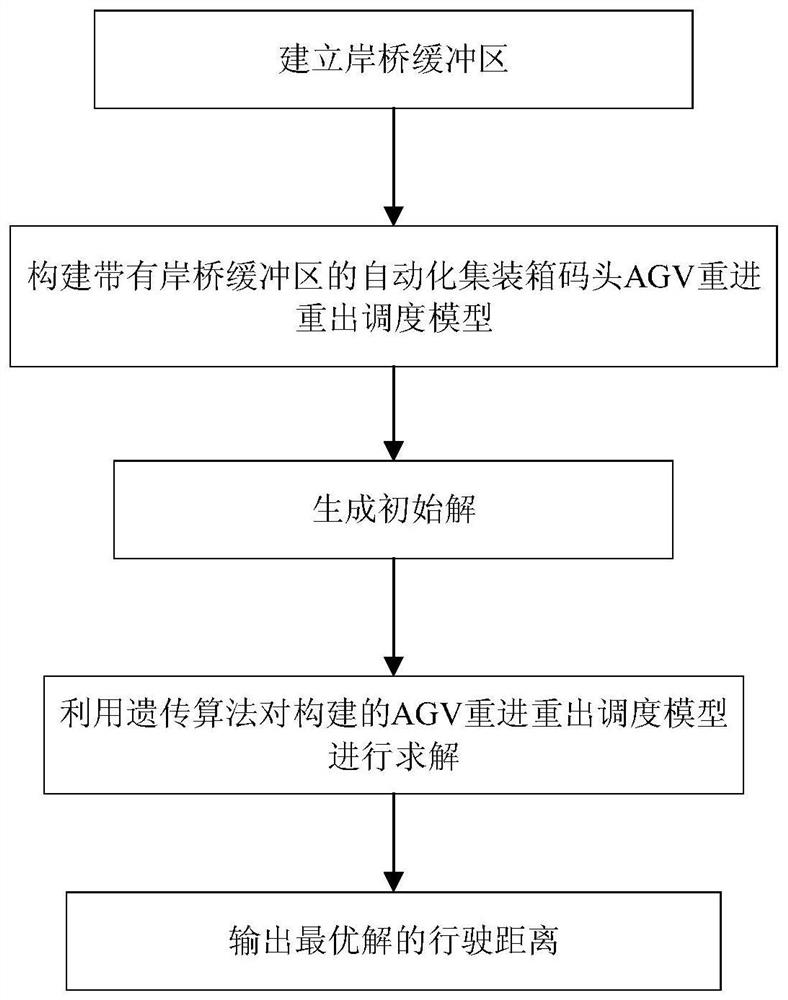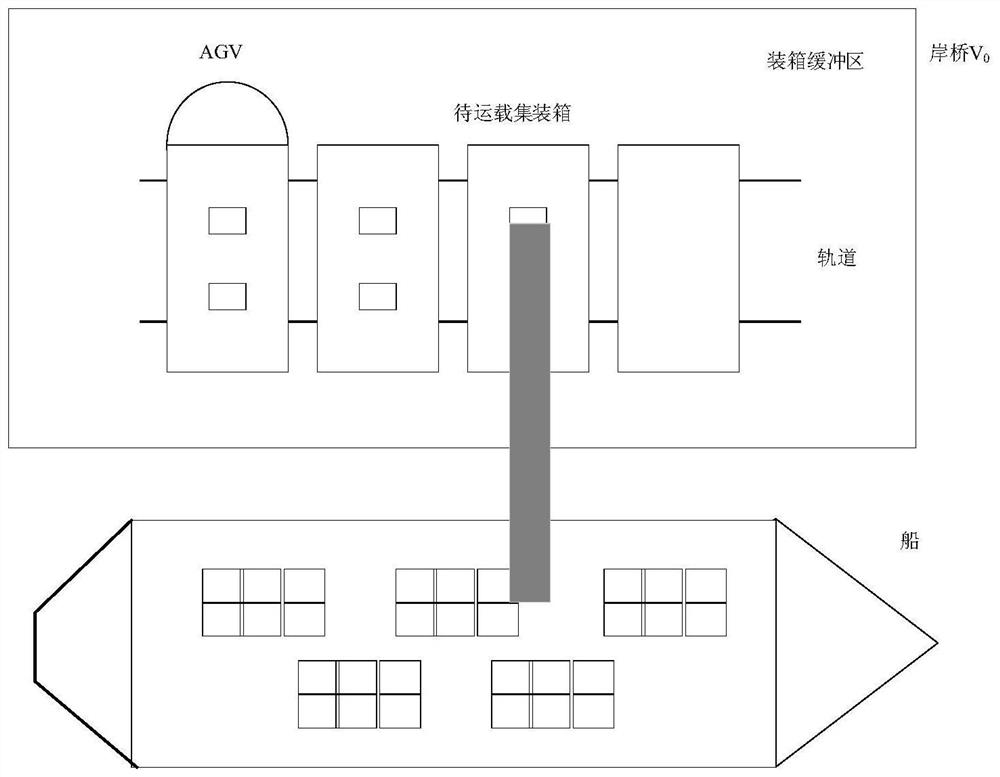Planning method for AGV reentry and reexit path of automatic container wharf with quay crane buffer area
A buffer and container technology, which is applied in the field of re-entry and re-exit path planning of AGVs in automated container terminals, can solve problems such as waste of time and resources and impact on transportation links.
- Summary
- Abstract
- Description
- Claims
- Application Information
AI Technical Summary
Problems solved by technology
Method used
Image
Examples
Embodiment 1
[0113] Such as figure 1 As shown, this embodiment 1 proposes a re-entry and re-exit path planning method for an automated container terminal AGV with a quay bridge buffer zone, which is a path optimization method for re-entry and re-exit of multiple AGVs on a single cargo ship.
[0114] At the container terminal, the task of the AGV is to carry the container from the side of the quay crane to the yard area, unload the container and return to the quay bridge, or drive from the quay bridge to the yard, load the container and carry it back to the quay bridge.
[0115]The re-entry and re-exit mode proposed in Example 1 means that the AGV reloads the container immediately after each unloading is completed, so as to realize the two-way container transportation between the quay crane and the yard, such as figure 2 shown.
[0116] The goal of the path optimization method in this embodiment is to complete all the container transportation work in the shortest distance by re-entry and ...
Embodiment 2
[0236] Such as Figure 5 As shown, the present embodiment 2 also describes a re-entry and re-exit path planning method for an automated container terminal AGV with a quay bridge buffer zone, the method includes the following steps:
[0237] I. Establish a shore bridge buffer zone, which includes a packing buffer zone and an unloading buffer zone.
[0238] II. Construct the AGV re-entry and re-exit scheduling model of the automated container terminal with the buffer zone of the quay crane.
[0239] III. Generate the initial solution. In the process of generating the initial solution, filter the same task points to reduce the size of the solution space searched by the hybrid particle swarm optimization algorithm to optimize the hybrid particle swarm optimization algorithm.
[0240] IV. Using the hybrid particle swarm optimization algorithm to solve the re-entry and re-exit scheduling model of the automated container terminal AGV.
[0241] It should be noted that the process of...
Embodiment 3
[0270] Such as Figure 6 As shown, the present embodiment 3 also describes a re-entry and re-exit path planning method for an automated container terminal AGV with a quay bridge buffer zone. The method includes the following steps:
[0271] I. Establish quayside crane buffer zone, including packing buffer zone and unloading buffer zone.
[0272] II. Construct the AGV re-entry and re-exit scheduling model of the automated container terminal with the buffer zone of the quay crane.
[0273] III. Generate the initial solution. In the process of generating the initial solution, the simulated annealing algorithm is optimized by screening the same task points to reduce the size of the solution space searched by the simulated annealing algorithm.
[0274] IV. Using the simulated annealing algorithm to solve the automatic container terminal AGV re-entry and re-exit scheduling model.
[0275] It should be noted that the process of steps I-III in this embodiment 3 is exactly the same a...
PUM
 Login to View More
Login to View More Abstract
Description
Claims
Application Information
 Login to View More
Login to View More - R&D
- Intellectual Property
- Life Sciences
- Materials
- Tech Scout
- Unparalleled Data Quality
- Higher Quality Content
- 60% Fewer Hallucinations
Browse by: Latest US Patents, China's latest patents, Technical Efficacy Thesaurus, Application Domain, Technology Topic, Popular Technical Reports.
© 2025 PatSnap. All rights reserved.Legal|Privacy policy|Modern Slavery Act Transparency Statement|Sitemap|About US| Contact US: help@patsnap.com



